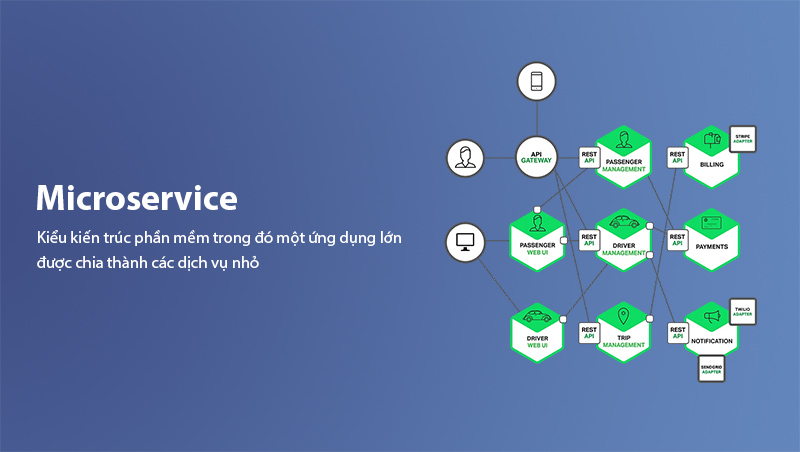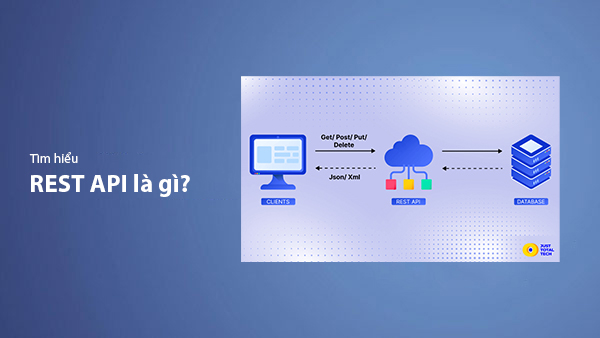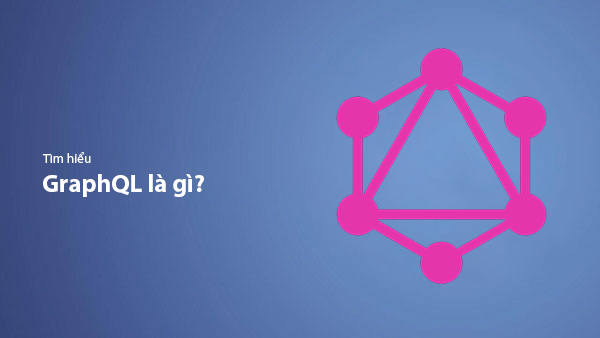Understanding Microservices Architecture – Benefits and Implementation
- Published on

- What is Microservice?
- Benefits of Microservices Architecture
- Understanding the Architecture of Microservice
- Advantages and Disadvantages of Microservices
- Advantages
- Disadvantages
- Key Principles to Consider When Designing Microservices Architecture
- Clear Separation of Services
- Ensuring Data Independence
- Using Standard Protocols for Communication
- Managing Communication and Messaging
- Automation and Infrastructure Management
- Monitoring and Logging
- Real-world Applications of Microservices
- E-commerce
- Streaming Services
- Finance and Banking
- Healthcare
- IoT (Internet of Things)
- The Difference Between Monolith and Microservices
- Architecture and Structure
- Scalability
- Deployment and Maintenance
- Management and Development
- Fault Tolerance
- Comparison Table: Monolith vs Microservices
- Frequently Asked Questions About Microservices
- Can Microservices automatically detect failures between services?
- How can data consistency be ensured in Microservices?
- Can Microservices help reduce latency in distributed systems?
- Can Microservices be easily transitioned from traditional environments to cloud environments?
- Can Microservices increase costs?
- How is versioning handled in Microservices?
- Can Microservices be deployed in an offline environment?
- Conclusion
What is Microservice?
Microservice (also known as Microservices architecture) is a software architecture style where a large application is broken down into smaller, independent services, each performing a specific function. These services communicate with each other through network protocols such as HTTP, gRPC, or message queues. Each microservice can be deployed, developed, and maintained independently, which increases the flexibility and scalability of the overall application. This allows development teams to work in parallel and quickly deploy changes without disrupting the entire system. Microservices architecture is particularly useful for large, distributed applications, helping reduce complexity and improve performance when dealing with a large number of users and data.

Benefits of Microservices Architecture
Microservices architecture brings many benefits to organizations and businesses when developing software systems. One of the most notable benefits is the ability to scale. With Microservices architecture, services can be scaled independently, meaning each microservice can be scaled based on its specific usage needs without having to scale the entire system. This helps save resources and costs while improving system performance.
Another important benefit is the ability to deploy independently. Since each service operates independently, you can update or change a microservice without disrupting the operations of other services. This is particularly useful in minimizing downtime and increasing system availability. If one service encounters an issue, other services can still continue to operate without being affected.
Additionally, Microservices increase flexibility in development and maintenance. Development teams can work on different services without worrying about the impact on the rest of the system. Services can use different technologies and programming languages, helping optimize the development process depending on the nature of each service.
Furthermore, microservices make Continuous Deployment (CD) easier, as each service can be independently tested, deployed, and released. This helps speed up product delivery to users while ensuring software quality.
Understanding the Architecture of Microservice
The Microservices architecture is a distributed application development method, where a system is divided into many small services, each performing a specific and independent task. Each microservice in this architecture has its own characteristics, such as independent databases, clear communication protocols, and separate development processes.
One key feature of Microservices architecture is data separation. Each microservice can use its own database, helping reduce dependencies on other services and optimizing performance. This also makes data management easier and minimizes issues related to synchronization and data contention.
Moreover, communication between services in Microservices is often based on RESTful APIs or message brokers (such as Kafka, RabbitMQ), allowing services to exchange data and requests efficiently and flexibly. These protocols help maintain independence between services and make integration between them easier.
Another important element in Microservices architecture is the use of containerization and orchestration. Microservices are often deployed in containers such as Docker, ensuring consistency between development and production environments. Orchestration tools like Kubernetes help manage, automate deployment, scaling, and maintenance of containers, ensuring the system remains stable and scalable.
In summary, the Microservices architecture not only enhances the scalability and flexibility of the application but also increases the system's stability and long-term maintainability, thanks to the clear separation of components within the application.
Advantages and Disadvantages of Microservices
The Microservices architecture brings many prominent advantages, but also faces challenges. Understanding these advantages and disadvantages will help you have a comprehensive view of the potential application of this architecture in software projects.
Advantages
-
Scalability: Each microservice can be scaled independently, allowing you to focus on scaling services with high resource needs without affecting the rest of the system. This optimizes performance and reduces costs.
-
Flexibility in development: Development teams can independently work on different microservices, using different technologies, programming languages, and databases, which improves development speed and responsiveness to changing requirements.
-
High availability: If one service fails, other services can continue to operate normally thanks to the independence of each service. This helps maintain system operation without interruptions, thereby improving uptime and reliability.
-
Continuous deployment: Microservices support the CI/CD (Continuous Integration/Continuous Deployment) process, making it easier and faster to deploy changes. Each service can be tested and deployed independently without affecting the entire system.
Disadvantages
-
Management complexity: As the number of microservices in a system grows, monitoring, managing, and maintaining these services becomes more challenging. Tools like Kubernetes or Docker Swarm can help address this, but they still require an experienced technical team.
-
Cost of inter-service communication: While separating services provides many benefits, it also increases the communication cost between services. Transmitting data via APIs or message brokers can create delays, affecting system performance.
-
Complexity in infrastructure deployment and maintenance: Managing infrastructure for microservices can be more complex than for a monolithic application. Orchestration and containerization tools help address this, but they require specialized knowledge.
-
Data synchronization: Each microservice has its own database, which may lead to data synchronization issues between services. Maintaining data consistency becomes more difficult when multiple services operate on the same data set.
While Microservices offer many benefits, you need to carefully consider the drawbacks and challenges they bring before deciding whether to apply this architecture to your project.
Key Principles to Consider When Designing Microservices Architecture
When designing a Microservices architecture, there are several fundamental principles that developers and software architects must keep in mind to ensure the system operates efficiently and is easy to maintain.
Clear Separation of Services
One of the most important principles when designing Microservices is clear separation of services. Each microservice should perform a simple, independent task without relying on other services. This reduces complexity and makes maintenance easier throughout the application's lifecycle. For example, one microservice could manage user accounts, while another service could handle payments without interacting with user data.
Ensuring Data Independence
Each microservice should have its own independent database, which helps reduce dependencies on other services and creates independence for each service. Separating data between services optimizes scalability and ensures that failures in one service do not impact others. While this may lead to data synchronization issues, it is a crucial principle in designing a microservices system.
Using Standard Protocols for Communication
For microservices to communicate effectively, using standard protocols is essential. Protocols like RESTful API or gRPC enable services to exchange data easily and consistently. Using open protocols not only reduces dependencies on specific technologies but also increases flexibility in system development and maintenance.
Managing Communication and Messaging
Microservices often communicate with each other through message brokers (such as Kafka, RabbitMQ) or event-driven architecture. When designing a system, you must ensure that communication between services is efficient and can handle high loads. Tools and methods such as event sourcing and CQRS (Command Query Responsibility Segregation) can help improve communication performance and handle large-scale data processing in microservices systems.
Automation and Infrastructure Management
To maintain the stability of a Microservices system, using automated deployment and orchestration tools like Kubernetes is crucial. These tools help manage containers, automate the deployment process, and scale services while minimizing manual intervention and ensuring that the system is always ready to operate.
Monitoring and Logging
An important factor in designing a Microservices architecture is monitoring and logging. With a large and distributed number of services, it is essential to track the status of each service and the overall system. Tools like Prometheus and Grafana help collect monitoring data, while the ELK stack (Elasticsearch, Logstash, Kibana) or Fluentd can be used to manage and analyze logs, helping detect issues early and improve performance.
By following the above principles, you can build a robust, scalable, and maintainable Microservices system over time.
Real-world Applications of Microservices
Microservices architecture has been widely applied in various industries and large organizations, helping solve challenges related to scale, flexibility, and scalability. Here are some real-world applications of Microservices across different industries.
E-commerce
In the e-commerce industry, Microservices systems help businesses manage and scale functions like payments, user management, inventory, discounts, shipping, and product catalogs. Each function can be developed and maintained independently, reducing dependencies between system components and improving performance. For example, an e-commerce platform like Amazon uses Microservices to manage millions of users, orders, and products without facing latency or failure issues.
Streaming Services
Streaming services like Netflix and Spotify use Microservices architecture to deliver smooth and uninterrupted services to millions of users. In these platforms, each service handles functions such as content recommendations, user account management, video and audio streaming, and payments. This helps maintain high performance and scalability without affecting service quality.
Finance and Banking
In the financial industry, large organizations like PayPal or Visa have transitioned to Microservices architecture to process millions of transactions and users daily. Services in a banking system may include payment processing, transaction management, security, and data analytics. Each service can be optimized for specific requirements, helping banking organizations quickly roll out new features without interrupting ongoing transactions.
Healthcare
In the healthcare industry, hospitals and healthcare systems can use Microservices to manage patient records, process medical data, schedule appointments, and handle insurance payments. With Microservices architecture, systems can easily integrate with external services such as pharmacy management software, laboratory systems, and online health apps, while maintaining security and scalability.
IoT (Internet of Things)
Microservices is an ideal choice for IoT systems, where devices need to communicate quickly and efficiently. Each device can be connected to an individual microservice to handle tasks such as monitoring, data analysis, and device management. For example, in smart home or smart factory systems, Microservices architecture helps manage smart devices, monitor and analyze real-time data, and ensure the system runs smoothly and can scale effectively.
In conclusion, Microservices has become a key solution for solving complex challenges in large applications across various industries, from e-commerce to healthcare.
The Difference Between Monolith and Microservices
Monolith and Microservices are two popular software architectures, but they differ significantly in how they organize and deploy systems.
Architecture and Structure
- Monolith: In a Monolithic architecture, the entire application is built as a single unit, where all system functions (user management, transaction processing, reporting, etc.) are contained within a single codebase and database. While this may be simple in the early stages of development, as the system grows in complexity, maintaining and scaling a Monolithic application can become difficult.
- Microservices: In contrast, Microservices split the system into smaller, independent services, each responsible for a specific function. Each microservice can be deployed, developed, and maintained independently, enhancing the application's flexibility and scalability. Microservices also allow different development teams to work on separate services without impacting the rest of the system.
Scalability
- Monolith: Scaling a Monolithic application requires scaling the entire system, even if only one part of the application needs more resources. This can lead to resource wastage and reduced performance.
- Microservices: Each microservice can be scaled independently, optimizing resources and reducing costs. Only the services that require more resources need to be scaled, while others can continue to run smoothly.
Deployment and Maintenance
- Monolith: Deploying and maintaining a Monolithic application can become challenging as the system grows. Any change or update must be deployed to the entire application, leading to longer downtime and more complex testing.
- Microservices: Services can be deployed and upgraded independently without interrupting other parts of the system. This helps minimize downtime and optimize the deployment process.
Management and Development
- Monolith: Since all functions are integrated into a single application, managing the codebase becomes difficult as the system grows. A small change can impact the entire system, slowing down development and deployment.
- Microservices: Developing and managing microservices are clearly separated, allowing development teams to work independently on different services. This increases flexibility and reduces conflicts between teams during development.
Fault Tolerance
- Monolith: If part of the application fails, the entire system can be affected. Handling errors in a Monolithic application can be complex and may require many synchronous changes.
- Microservices: Each microservice operates independently, so if one service fails, other services can continue to function normally. This increases the system's fault tolerance and makes it easier to recover after failures.
Comparison Table: Monolith vs Microservices
| Criteria | Monolith | Microservices |
|---|---|---|
| Architecture and Structure | The application is built as a single unit, with all functions integrated in a single codebase and database. | The system is divided into small, independent services, each performing a specific function. |
| Scalability | The entire system must be scaled simultaneously, even if only part of it requires more resources. | Each service can be scaled independently, optimizing resources and reducing costs. |
| Deployment and Maintenance | The entire system must be deployed and maintained whenever a change is made, which becomes difficult as the system grows. | Services can be deployed and upgraded independently, minimizing downtime and optimizing the deployment process. |
| Management and Development | Managing the codebase becomes complex as the system grows, and even small changes can affect the entire application. | Independent services allow development teams to work separately without affecting each other. |
| Fault Tolerance | Failures in part of the application can affect the entire system. | Independent services ensure that the system continues to operate even if one service fails. |
In conclusion, while the Monolith architecture may be suitable for small or simple applications, Microservices is the ideal choice for large, complex systems that require high scalability.
Frequently Asked Questions About Microservices
Can Microservices automatically detect failures between services?
Microservices systems can be configured to automatically detect and handle failures between services. For example, you can implement a circuit breaker mechanism to automatically stop requests to a non-functioning service and redirect them to another service or return a temporary error to the user. This prevents the entire system from "crashing" due to one failing service.
How can data consistency be ensured in Microservices?
Since each service in a Microservices architecture has its own database, maintaining data consistency across services can be challenging. Typically, methods like Event Sourcing and CQRS (Command Query Responsibility Segregation) are used to synchronize data between services without disrupting system operations.
Can Microservices help reduce latency in distributed systems?
Although Microservices architecture can help reduce latency by isolating services, communication between distributed services over the network can still introduce latency. However, using solutions like caching, asynchronous communication, and optimizing APIs can minimize this latency and improve overall performance.
Can Microservices be easily transitioned from traditional environments to cloud environments?
Moving from a traditional (on-premises) system to a Microservices architecture on the cloud can present some challenges, such as the need to restructure the application and change deployment methods. However, once migrated to a Microservices architecture, utilizing cloud services like AWS, Google Cloud, or Azure can alleviate infrastructure management burdens and provide rapid scalability.
Can Microservices increase costs?
While Microservices offer many benefits in terms of scalability and maintaining service independence, they can increase costs due to the need to deploy multiple separate services, each requiring its own compute, storage, and management resources. However, these costs can be reduced if services are optimized and tools like Docker and Kubernetes are used to manage infrastructure more efficiently.
How is versioning handled in Microservices?
Versioning in Microservices can be quite complex since each service may be deployed and upgraded independently. However, methods like API Gateway, API versioning, or using backward-compatible APIs can help maintain compatibility between different versions of services without causing disruptions.
Can Microservices be deployed in an offline environment?
While Microservices architecture is primarily designed for distributed environments connected via a network, in some cases, microservices can be deployed in offline environments using tools like Docker Swarm or Kubernetes to manage containers in an internal setting.
Conclusion
The Microservices architecture has become an optimal solution for developing large and complex applications. By breaking down functions into small, independent services, Microservices offer flexibility in development, deployment, and maintenance of systems. From increasing scalability to minimizing risks and downtime, Microservices help organizations optimize performance and improve responsiveness to fast-changing business needs.
However, implementing Microservices is not without its challenges. Issues like managing communication between services, synchronizing data, and infrastructure management need careful attention. It’s crucial to establish a clear strategy and use supporting tools like Kubernetes, Docker, and CI/CD pipelines to ensure efficient deployment and maintenance of Microservices systems.
When implemented correctly, Microservices will help organizations not only improve performance and scalability but also create new opportunities for providing services and optimizing user experiences.
Latest Posts

Lesson 26. How to Use break, continue, and return in Java | Learn Java Basics
A guide on how to use break, continue, and return statements in Java to control loops and program execution flow effectively.

Lesson 25. The do-while Loop in Java | Learn Basic Java
A detailed guide on the do-while loop in Java, including syntax, usage, examples, and comparison with the while loop.

Lesson 24. How to Convert Decimal to Binary in Java | Learn Basic Java
A guide on how to convert numbers from the decimal system to the binary system in Java using different methods, with illustrative examples.

Lesson 23. How to Use the While Loop in Java | Learn Java Basics
Learn how to use the while loop in Java with syntax, real-world examples, and practical applications in Java programming.
Related Posts

What is REST API? Complete A-Z Knowledge About REST API
REST API is one of the essential concepts that every backend developer needs to fully understand. This article provides comprehensive knowledge about REST API, including its definition, principles of operation, and how to build a standard RESTful API.

What is HATEOAS? How to Build APIs Using HATEOAS
Learn about HATEOAS, an important concept in API development, and how to build APIs using HATEOAS to improve interactivity and scalability.

What Is GraphQL? The Advantages of GraphQL Over REST API
Explore GraphQL, a modern API technology, and why it outperforms REST API in many web development scenarios.

What is XSS? Signs of Detection and Effective Prevention Methods
Learn about XSS, signs of detection, and effective prevention methods for XSS attacks in websites.

